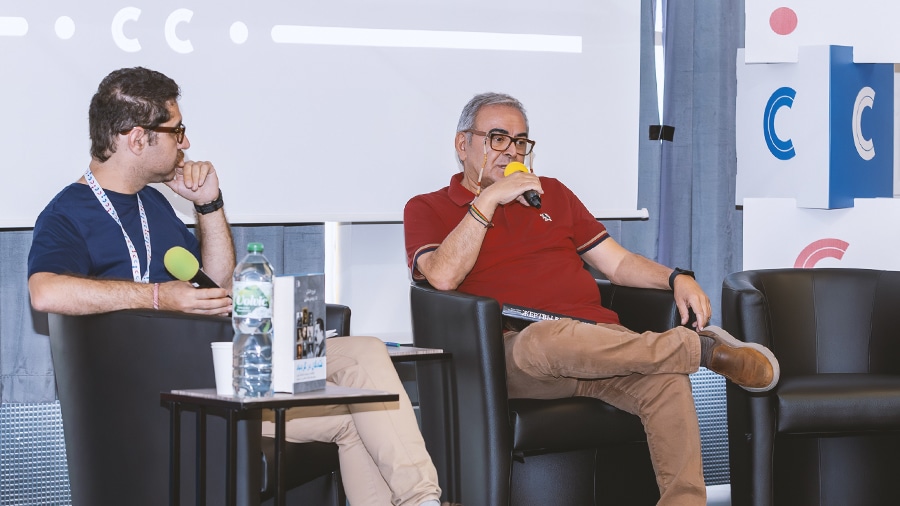Touraj Atabaki
Moderator: Emmanuel Shokrian
In this panel, Touraj Atabaki in a conversation with Emmanuel Shokrian, discussed his research on the fate of Iranian communists during the Stalin era in the Soviet Union and explained his efforts to discover the untold dimensions of this tragic history. This research has been published in a book of the same name, Fallen in the Whirlwind, by the Nashr Baran publishing company and can be found in this link.
The research path of Touraj Atabaki
Introducing the subject of his new book, which deals with the fate of Iranian communists during Stalin’s era, Atabaki points out the challenges and difficulties he has encountered in the course of research. He states that this topic had attracted his attention since his youth and he became interested in it from the beginning in left-wing publications and writings.
Over time and as a professional researcher, he decided to go to the original sources and talk closely with the survivors of these oppressions. This path has been accompanied by many difficulties, as access to archives and sources in the former Soviet Union was often limited and complicated. His efforts finally led to the clarification of some parts of the tragic fate of people who became victims of Stalin’s policies.
The fate of Iranian communists in the Soviet Union
Atabaki explains that during Stalin’s purges, a large number of Iranian communists were arrested, tried and executed. He carefully examines the methods Soviet authorities used to eliminate these people, including forced confessions and sham trials. Atabaki also mentions the recent efforts to commemorate and honor the victims, including the establishment of a memorial in Moscow, which is a reminder of a great tragedy that affected not only the victims but the entire communist movement of Iran.
Division within the communist movement of Iran
The speaker emphasizes that the communist movement of Iran was not unified and had divisions and internal differences. He explains that there were Stalinist and non-Stalinist factions among Iranian communists, and the Stalinist faction had the upper hand at that time. Atabaki points out that these differences and tensions caused the overall weakening of the communist movement in Iran and made the relations between different groups more complicated. He also points to the role of Comintern (Communist International) and Soviet foreign policies in the formation of these internal developments.
The complex relationship between the Soviet Union and Iran
Atabaki deals with the complex relations between the Soviet Union and Iran in this historical period. He explains that there were two different approaches among the Soviet government; One is the policy of the Comintern, whose goal was to promote the world communist revolution, and the other is the policy of the Soviet Foreign Ministry, which sought to maintain good relations with the Iranian government. This duality in policies led to tensions and conflicts that also affected the fate of Iranian communists.
Suggestions for consideration and further research
Atabaki offers suggestions for remembering and honoring the victims of these repressions as well as promoting more knowledge of this important and untold part of history. Some of these suggestions are:
- Create a memorial or memorial to the victims
- Further research on primary sources and personal narratives
- Cooperation with academic and research institutions
- Interaction with the Iranian Diaspora and social organizations
- Promoting this historical narrative in textbooks and public discourse
Atabaki’s speech not only examined the fate of these victims in the context of a forgotten history, but also emphasized the importance of remembering and honoring these people in building a more informed future.



